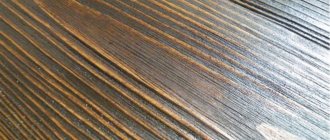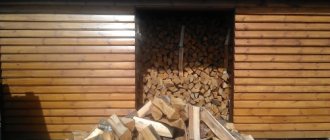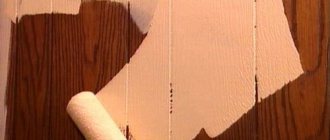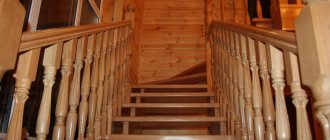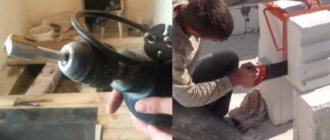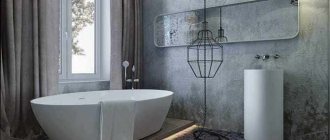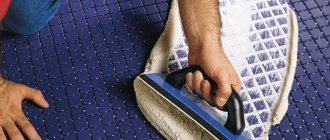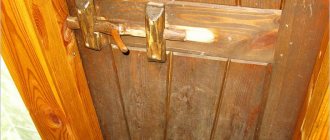Antique items invariably evoke admiration for their beauty and the skill of their creators. Rare items that have retained their attractiveness become an unattainable dream due to their high cost. Fans of antiques have found an affordable way to decorate their home and make an antique door with their own hands. There are several methods to decorate your interior in retro style or change your front door beyond recognition. All work is done independently; you don’t need to be an artist or cabinetmaker to do this.
What is wood brushing
Brushing is a technology for aging wood artificially. Using special tools, a relief surface is created, on which the growth rings become clearly visible. This creates the desired effect, the wood looks like old wood that has served for many years.
Anyone who is interested in what wood brushing is will know that the term comes from the word brush, which means “brush” in English. This is the tool that is used to remove soft fibers from the surface of wood. They form in a living tree in the spring, when its active growth begins.
The fibers are loose in structure, which is why they are more susceptible to abrasion than the hard rings that form in summer and autumn. This is how wood naturally ages, but it happens very slowly over many years. The purpose of brushing is to greatly speed up the process by removing soft fibers with a wire brush.
Furniture made from aged wood that can also be placed in a modern home Source happymodern.ru
Patination
Patination with white paint
Patination will help create the effect of repeated painting on a pine door. This method requires precision and creativity. The first coat of paint is applied using a spray bottle. It is necessary that the coating is smooth and without streaks. This quality is difficult to achieve using a brush, but you can try. For the main tone, dark paint is used. After it dries, a thin layer of white paint is applied to the door. After letting it dry slightly, wipe down individual areas with a dry rag. The processing is completed with sandpaper, it helps to draw structural dark stripes. The more wear on the canvas, the older it appears. The work is secured with a layer of varnish.
Patination with gold paint
Interior doors with patina are popular, but due to the manual decorating processes used, they are expensive. A little time and imagination will allow you to make such a door yourself with minimal financial costs. In addition to light paint, gold, silver or black are used, depending on this, different patina effects are created.
What wood is suitable for brushing?
For brushing, you need to choose wood from trees of soft and medium hardness and with a structure that makes the growth rings clearly visible. Aged wood comes well from conifers: spruce, larch, pine, cedar and fir, as well as linden, aspen, willow, chestnut and alder.
On boards made of oak, walnut, birch, rowan, ash, you can also get the desired effect, but it will be less pronounced. It is more difficult or completely impossible to age wood from acacia, maple, yew, beech, teak, and pear. Brushing technology is ineffective for trees of tropical origin. They have practically no growth rings due to the climate.
In addition to boards, you can carefully brush veneered boards and lining. The small depth of immersion of the brush allows you not to destroy the surface, but to give expressiveness to the design.
This is what brushed lining looks like Source 1povagonke.ru
Pine with an antique effect - brushing yourself
To give the desired shade, a variety of stains and impregnations are used and are chosen to suit any interior or exterior. Special impregnations help protect wood from rotting and various external influences if the product is used in outdoor conditions.
Brushing and burning wood are decorative finishing technologies. Methods allow you to preserve the pattern of the material, give the table an antique look, and change its shade.
Some impregnation manufacturers provide a guarantee of up to 15 years for two layers. Experience shows that at least half of this time the product actually remains protected.
Brushing tools
There are several ways to age wood. You can artificially age wood using:
- Hand tools. This is the simplest, but also the most labor-intensive method; its downside is that the process takes a lot of time. To perform brushing, a brush with stiff metal bristles is used. With the manual method, the depth is small, which must be taken into account when choosing wood for processing. This method is well suited for the production of single parts of small size.
- Electromechanical tool. This method is the most common, accessible and productive. It is universal, as it can be used not only in production, but also at home. Brushing is carried out using special machines or using a drill or grinder with brush attachments attached to them.
- Stankov. Wood is brushed on machines only in production conditions. They are designed for mass production of parts. The machine provides a full processing cycle; 3 brushes are used alternately: metal, removing fibers, grinding and polishing.
The choice of one or the other is influenced by the characteristics of the workpieces and the amount of work.
Grinder for brushing Source ad-cd.net
See also: Catalog of round log house projects
Aging techniques
The front door influences the first impression of the house, therefore, in addition to the reliability and strength of the locks, the owners are concerned with its appearance. Solid wood canvas, even after many years, retains its excellent qualities and natural living beauty. Scuffs and scratches, constant companions of time, make the door less presentable, but there are ways to correct the situation and give a quality item a second life. There are five main techniques by which the door travels into the past:
- applying stain;
- brushing with a wire brush;
- use of paint and paraffin;
- patination;
- craquelure varnish.
When choosing a way to make a door look like an antique, focus on the external features of the canvas, and in the case of interior doors, on the decor of the room.
Imitation of antiquity is appropriate on swing doors; sliding or folding structures with such an effect look unnatural. Metal overlays attached to the corners and lock, as well as an unusual forged handle in the shape of a ring or an animal’s head will be an excellent addition to the decor. The style will be supported by massive canopies secured with nails with large brass heads.
How does brushing work?
The wood brushing process consists of 3 successive stages. Each of them uses brushes made of different materials. Processing always goes along the fibers.
Brushing sequence:
- Treating the wood surface with a brush with metal (steel or brass) bristles. It effectively cuts and removes soft fibers, resulting in a textured relief on the surface.
- Sanding wood with a brush with nylon bristles coated with abrasive. The treatment removes damaged fibers, smooths out sharp edges and cleans out lint in recesses.
- Polishing with a soft sisal bristle brush. This stage completes the brushing of the wood and gives the product its final look.
The speed of fiber removal, relief depth and processing performance depend on the stiffness of the bristles of the metal brush. Therefore, for boards or workpieces made of hard wood, you need to choose stiffer brushes.
Wood surface after brushing Source www.comfortclub.ru
Other brushing methods
In addition to the main one, there is another industrial, but less popular way to age wood. This is sandblasting, in which brushing is carried out not with brushes, but with a jet of sand supplied under pressure. It is possible to obtain a deep relief with soft differences, without additional sanding.
Wood is also aged chemically, using strong acids or alkalis, ammonia, which can corrode cellulose. This method is used either on its own or as a first step prior to processing with metal brushes.
To age the wood and give it an original look, special firing is used. The material is scorched with a blowtorch or gas torch, the charred layer is moistened with water, then cleaned with a brush, removing all excess, and the surface is impregnated with oil or varnish to complete the processing.
Burnt and brushed wood Source 7dach.ru
See also: Catalog of companies that specialize in garden furniture and facade materials
Preparing the door leaf
First remove the old paint
Before starting any artistic work, the door must be prepared. To do this, it is removed from its hinges and laid horizontally on two stools. The canvas is freed from loops, handles and locks. The glass inserts are removed from the canvas along with the glazing beads. The next step is to remove the old paint. To do this, use a hair dryer, it heats up the coating, the paint swells and comes off. Finally, it is cleaned off with a spatula. Small particles of paint are removed by sanding.
Chips and irregularities are puttied
If there are chips on the surface, they are rubbed down with putty to match the canvas. The door must be cleaned of dirt and grease.
Brushing at home
Aging wood is not a simple process, but it is not such a complicated process that you can’t do it yourself. You will need material, simple tools, free time and a desire to work to make a beautiful product.
What is needed for brushing
Brushing brushes with steel or brass bristles can be used as brushes for brushing. To make the surface more uniform, it is better to choose brushes that are similar in shape to a roller or those that have a wider end side. The main work will be done with these brushes.
For the next stage - sanding the fleecy and rough surface - you will need a brush with synthetic nylon bristles with abrasive inclusions. After treatment with such a brush, the surface of the wood will acquire a more attractive appearance and will be prepared for polishing. And finally, for final processing you need to purchase a brush with coarse wool or sisal bristles. After using it, the wood will become perfectly smooth.
Electrical tools include a drill or an angle grinder. You should definitely get gloves and glasses; gloves will protect your hands from possible damage, glasses will protect your eyes from lint that may get into them.
Various brushes for brushing Source do.ngs.ru
Preparatory work
Before starting work, you should remove the doors from their hinges and place them horizontally on a hard surface. Two stools are suitable for this purpose. Then, using a hair dryer, you need to remove the old paint. How to do this? By heating paint, which will swell under the influence of temperature. Now it can be easily removed with a spatula.
The next step is to seal all the gaps, cracks and potholes formed during operation. To do this, you will need putty, the color of which should be close to the shade of the wood.
Ideally, use a furniture varnish based on beeswax. It is not cheap, however, if you want to make your entrance doors beautiful, reflecting the color and texture of natural wood in its full glory, then you should not skimp on finishing materials.
The final stage is sanding. In order for the paint to lie smoothly in the future, you need to polish it thoroughly. Doing this by hand is difficult and time-consuming, so a grinding machine will help. Now you need to decide how to decorate the door.
Video description
You can see how brushing is done at home in the video:
After processing
After the aging of the wood is completed, you can leave the processing at this stage or continue it: using various tools, for example, a drill, an awl and a hammer, make holes in the board that imitate traces of insects, make cracks on knots, scratches, dents, etc. e. fill some holes with putty, simulating dust accumulations. After this, paint the wood, cover it with stain, wax or varnish.
This is what brushed and painted boards look like Source e-brus.ru
Coating with different compositions protects the surface from harmful influences and extends the service life of the product. The painted surface becomes more textured, the pattern appears more clearly: the recesses become darker in color, and the ridges become lighter.
Applying stain
Covered with stain
To create an original color and emphasized wood pattern, water-based stain is used. This composition penetrates the pores of the wood and reacts with tannins. Penetrating deep into the canvas, the stain lifts the wood fibers and makes its structure more prominent. The colors of the stain allow it to be applied to various types of wood, it will highlight light shades, reddish and black. Apply the composition with a foam sponge or brush. The work is carried out in several stages, the first layer being the most abundant. After it dries, you can sand the surface and paint it again. The finished door is waxed.
Where is brushed wood used?
The bulk of the brushed material is used for the production of furniture and other interior items, and is used for interior decoration.
The use of brushed wood in the interior Source ratatum.com
From such wood you can make any “antique” furniture: cabinets, chests of drawers, beds, shelves, etc., cover the walls with panels made of aged wood, renew the floor, decorate the fireplace with a shelf made of it. Brushed wood is used to make small decorative items, such as jewelry boxes.
Beautiful box in country style Source yandex.net
Artificially aged wood can be used as a finishing material not only for residential buildings, but also for bars, restaurants, billiard halls, cafes and similar establishments. They will help create a unique, cozy atmosphere.
Craquelure
The technology for producing deep and small cracks in a painted canvas is called craquelure. Why? Craquelure is a material that creates the effect of breaking an integral layer. Anyone can age entrance or interior doors using this method. If you strictly follow the instructions, the result will be the best.
The first step is to apply the base paint. When the surface is dry, you need to spray the finishing coat (craquelure) onto it. As a result, the components will cause the base layer of paint to become covered with a web in the form of decorative cracks. This will take a few minutes. Oddly enough, but that's all. There shouldn't be any difficulties.
Which paint color to choose is entirely your decision; the shade options are very different. There are no rules or advice here. You can take into account the color of the trim in your home or room.
Of course, there are many more technologies for aging doors: carving, adding metal or wooden overlays, painting and more. But these methods are quite complex. The methods described above will be enough to give your door several decades of life.
Burning
Wood is fired during self-decoration and at an intermediate stage.
This is an inexpensive way to color wood, but many people do without firing and use tinting. Pine and spruce are best treated with fire.
When brushing wood with your own hands by firing, the algorithm of actions is as follows:
- Burn the surface evenly and shallowly, burn the resin in the knots until completely evaporated.
- Use a hand brush to walk along the fibers (moving away from you and forward).
- Remove any remaining soft fibers with a stiff brush (like a flute).
- For a deeper and more prominent structure, re-firing.
The design will be pronounced and bright; after double firing, it is enough to cover the product with wax or varnish and do without tinting - the fire will already color the ridges and curls. Boxes and picture frames made of burnt wood look impressive.
Machine Applications
All three stages of finishing can be performed on special grinding machines or using other electrical equipment: grinders for smooth or angular surfaces. There are homemade brushing machines. It is difficult and expensive to make a full-fledged machine with your own hands, working like a thickness planer, so they use the same grinder with several metal and nylon attachments.
Full mechanization of work makes sense for large volumes of wood that require brushing. In such a situation, investments in the acquisition and operation of units will be justified. Common types of home repair and construction work can be quite successfully done with an angle grinder, which every craftsman has.
Technology advantage
Brushing wood has long been mastered by large woodworking enterprises, but is also available for small industries or individuals. The simple technique of the process allows you to do all the work with your own hands and people without practical skills.
From cheap and accessible lumber, you can create a skillful imitation of expensive finishes. With visual perception, you will have the feeling that in front of you are exotic types of wood, instead of the usual lining, an old barn board will suddenly appear, a sheet of plywood will turn into a valuable ornamental material.
Processing antique wood by brushing provides a wide range of possibilities for playing with color. Painted surfaces can look dusty, covered in cobwebs and mold, or come in extravagant color combinations.
Rough beauty
Texturing or brushing a board, timber, or block is a manufacturing process in which the surface acquires depth and/or relief. The easiest way to manually reproduce an ancient Japanese finish is with an angle grinder fitted with a wire brush.
Its main drawback: it removes both soft and hard layers of wood. Works best on boards with a sharp difference in density between the growth rings of early and late wood.
The grinder must have speed control. A simple example. Household tools of this type are the most resourceful. 10 thousand rpm is the lower limit. The brush edge will rotate at a speed of more than 200 km/h.
It is simply impossible to control the process at such speeds. A light touch (given the vibration it is extremely difficult to do) will tear out a layer at least 1-2 mm thick from the surface and can burn the wood.
The above-mentioned relief height cannot be achieved. For the same reason, there is no need to try to grind the finished product with a resourceful grinder.
The only operation for which a non-adjustable grinder is suitable is the initial stripping of wood and the separation of knots. The thickness of the steel wire for such operations: 0.25 - 0.38 mm. It is worth reminding: ignoring personal protective equipment - goggles, respirator or mask - is life-threatening.
Getting to know the process
It is not worth purchasing an adjustable UGM to enter the topic. You can try it with a minimal set of tools.
- Electric drill with adjustable speed, device for securing brushes in the chuck.
- Flat, cylindrical, conical, cup inexpensive metal and synthetic brushes.
- Sandpaper. For planed surfaces, use paper with a grit of 120. For the final, finest sanding, use 180 or 240.
- Soft brushes for removing dust from the surface.
- Stain of the required shade, light transmission, application, with protective additives or wood oil.
- Synthetic or natural varnish.
- Mask, glasses.
The progress of the work is clear from the list. The mass-dry (important!) material is processed with brushes to the required depth. The tool moves along the fibers. Then it is sanded. If you don’t mind spending money on a nylon brush for final sanding, the process will go faster.
The effect of old wood is enhanced by shallow mechanical damage to the surface: dents, grooves, scratches. They are applied before work begins.
Beginner Brusher's Kit
Steel brush: You can practice with it and sandpaper without power tools.
It can be tedious and time-consuming, but who said creating a piece of art doesn't take effort?
Main stages
Brushing is a method of surface treatment in order to obtain the effect of simulating aged wood. The process, which is quite simple in technical terms, consists of successive stages.
- Preparation. The selected workpiece must be slightly moistened. This will reduce the amount of sawdust and wood dust during processing.
- Rough processing. Use a wire brush to remove soft surface fibers without destroying the hard ones. The brush should move along the grain of the wood.
- Grinding. This operation is performed with an abrasive coated tool. It is necessary to remove residual fibers from the surface of the workpiece and eliminate unnecessary roughness.
- Polishing. To make the wood smooth and aesthetically pleasing, a sisal brush and fine-grained sandpaper are used. After thorough treatment, it is necessary to remove dust and dry the surface.
- Painting. An unusual decorative look is achieved using gold or silver paint, which creates the effect of glare in microcracks. The stain looks beautiful when applied in several layers. After the painted surface has dried, it should be re-polished.
- Varnishing. Coating with special compounds is designed to protect the surface, increase service life and maintain the original appearance.
Final finishing
Aging of countertops, doors, panels, etc. ends with coloring. Several stages give a good result. First of all, you need to carefully remove sanding dust from the surface. The best way is a powerful air jet. Single products can be blown out with a vacuum cleaner, but in mass production you cannot do without a compressor.
It will also be needed for coating. There are several of them.
- Primer.
- Coloring. The classic brushing color is gray with all shades. There are 48 of them on the RAL scale: from squirrel gray to pearlescent mouse gray. This is what wood has that has spent ten years under the sun, precipitation and winds.
- Patination followed by polishing.
- Cleaning from dust, varnishing.
Wood oils are also used, which are capable of forming films due to their high content of linolenic acid. Wood oil is the marketing name for drying oil (boiled oil). The best of them is flaxseed: up to 80% acid (sunflower – 30%).
Working with oils requires skill: they must be rubbed in so that there are no mini puddles or streams left. Once dry, they cannot be removed.
Brands of woodworking products
Tools for working with wood are produced by both domestic and foreign companies. The most popular companies in the Russian market these days are Interskol, Makita, Jet and Triton.
Brushing wood with JET 10-20 Plus
Interskol is a domestic brand that has existed since 1991. The tools that the company produces are presented in different CIS countries and are in certain demand. The products of the Interskol company are gaining more demand every year, which is why the company is expanding its range. Brushing with Interskol
One of the leaders among the world's woodworking companies is the Japanese company Makita, founded at the beginning of the last century. Its product range includes more than a thousand items, ranging from drills and screwdrivers to machine tools and laser equipment. Brush sander Makita 9741
Cheaper tools are sold by domestic Russian companies, such as Interskol. In addition, such instruments are easier to obtain, as they are popular in the country. Foreign companies, including Makita, do not present their entire range on the Russian market, but it can be ordered without problems through official dealers and regional distributors.
A drill with a metal attachment is suitable for the home handyman.
If wood aging occurs on a large scale, you can create a special machine that will semi-automatically carry out this process. You can create it yourself or order it, for example, from Jet. Russian Interskol does not manufacture such mechanisms. The cost of such a mechanism will be quite impressive, since the machine efficiently simultaneously performs several brushing processes
It is also very important that only removable products can be used on it. If the floor or wooden part of a complex configuration is aging, the machine will not help
Show sugi ban
The worldwide term for what is known in Japan as yaki-sugi-ita (or simply yakisugi), which literally translates to “burnt cedar board.” Although "sugi" colloquially means cedar in English, it is actually Cryptomeria japonica, a species of the cypress family native to Japan.
It's a counterintuitive but brilliant idea: burning boards to make them fireproof. If you've ever tried to start a fire using charred firebrands, you get the idea. Combustion destroys the cellulose in the wood.
These are carbohydrates that insects, fungi and bacteria love. Fire makes lumber uninteresting to pests and resistant to rotting. The resulting carbon layer repels water and protects from the sun. According to some estimates, boards that go through this process can last 100 years or more.
Chemical method
In addition to mechanical brushing, chemical brushing is carried out.
This is a faster and easier method, but at the same time more dangerous. The method requires the use of:
- of hydrochloric acid;
- sulfuric acid;
- ammonia;
- alkalis.
An aggressive chemical is applied to the surface of the workpiece and left for several hours. Then it is thoroughly washed off with water. The workpiece is dried. If necessary, it is processed a second time.
The procedure must be carried out wearing gloves and a respirator. Aggressive chemical compounds can cause burns.
Today you can find special compounds for chemical brushing on sale. But they are found on store shelves quite rarely.
